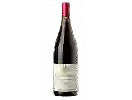
Winery Bouvet-LadubayLa Petite Bulle Brut
This wine is a blend of 2 varietals which are the Chardonnay and the Chenin blanc.
This wine generally goes well with fruity desserts, pork or vegetarian.
Wine flavors and olphactive analysis
On the nose the La Petite Bulle Brut of Winery Bouvet-Ladubay in the region of Loire Valley often reveals types of flavors of non oak, tree fruit.
Food and wine pairings with La Petite Bulle Brut
Pairings that work perfectly with La Petite Bulle Brut
Original food and wine pairings with La Petite Bulle Brut
The La Petite Bulle Brut of Winery Bouvet-Ladubay matches generally quite well with dishes of pork, rich fish (salmon, tuna etc) or shellfish such as recipes of gloom and doom, mackerel in white wine or creamy risotto with scallops.
Details and technical informations about Winery Bouvet-Ladubay's La Petite Bulle Brut.
Discover the grape variety: Chardonnay
The white Chardonnay is a grape variety that originated in France (Burgundy). It produces a variety of grape specially used for wine making. It is rare to find this grape to eat on our tables. This variety of grape is characterized by small bunches, and small grapes. White Chardonnay can be found in many vineyards: South West, Burgundy, Jura, Languedoc & Roussillon, Cognac, Bordeaux, Beaujolais, Savoie & Bugey, Loire Valley, Champagne, Rhone Valley, Armagnac, Lorraine, Alsace, Provence & Corsica.
Informations about the Winery Bouvet-Ladubay
The Winery Bouvet-Ladubay is one of of the world's great estates. It offers 81 wines for sale in the of Loire Valley to come and discover on site or to buy online.
The wine region of Loire Valley
The Loire Valley is a key wine region in western France. It follows the course of the Loire River on its Long journey through the heart of France, from the inland hills of the Auvergne to the plains of the French Atlantic coast near Nantes (Muscadet country). Important in terms of quantity and quality, the region produces large quantities (about 4 million h/l each year) of everyday wines, as well as some of France's greatest wines. Diversity is another of the region's major assets; the styles of wine produced here range from the light, tangy Muscadet to the Sweet, honeyed Bonnezeaux, the Sparkling whites of Vouvray and the juicy, Tannic reds of Chinon and Saumur.
The word of the wine: Arching
A stage in the vegetative cycle of the vine that occurs after the leaves have fallen and is characterized by the drying out of the soft shoots, which are transformed into hard shoots by lignification.














